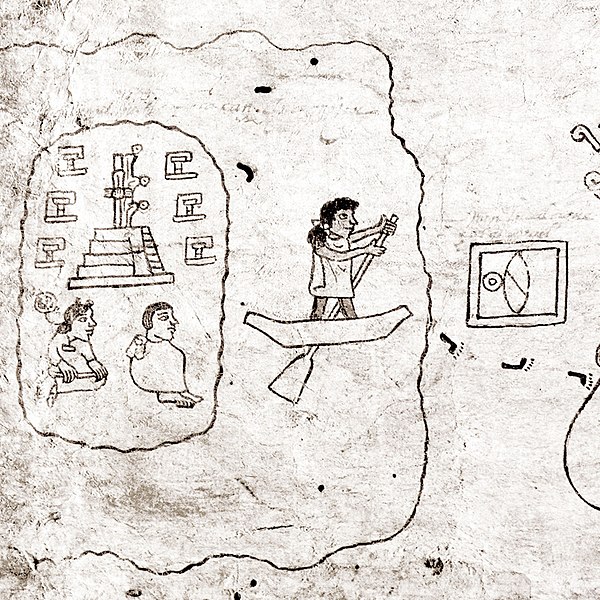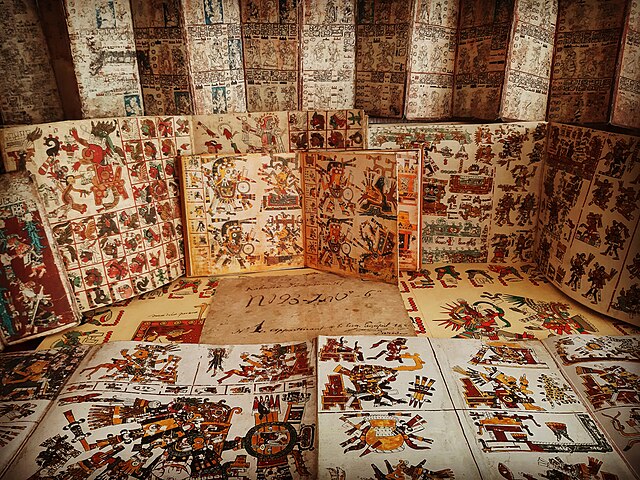Aztec codices are Mesoamerican manuscripts made by the pre-Columbian Aztec, and their Nahuatl-speaking descendants during the colonial period in Mexico.
Part of the first pages of Codex Mendoza, depicting the founding of Tenochtitlan.
Diego Durán: A comet seen by Moctezuma, interpreted as a sign of impending peril. (Codex Duran, page 1)
Detail of first stones from the Codex Boturini depicting the departure from Aztlán.
Codex Magliabechiano: ritual cannibalism. (Folio 73r)
Mesoamerican codices are manuscripts that present traits of the Mesoamerican indigenous pictoric tradition, either in content, style, or in regards to their symbolic conventions. The unambiguous presence of Mesoamerican writing systems in some of these documents is also an important, but not defining, characteristic, for Mesoamerican codices can comprise pure pictorials, native cartographies with no traces of glyphs on them, or colonial alphabetic texts with indigenous illustrations. Perhaps the best-known examples among such documents are Aztec codices, Maya codices, and Mixtec codices, but other cultures such as the Tlaxcaltec, the Purépecha, the Otomi, the Zapotecs, and the Cuicatecs, are creators of equally relevant manuscripts. The destruction of Mesoamerican civilizations resulted in only about twenty known pre-Columbian codices surviving to modern times.
Some examples of facsimile versions of Mesoamerican codices
Boturini Codex, an example of a tira
Codex Bodley is a screenfold
The Selden Roll, a tira that has been rolled rather than folded








